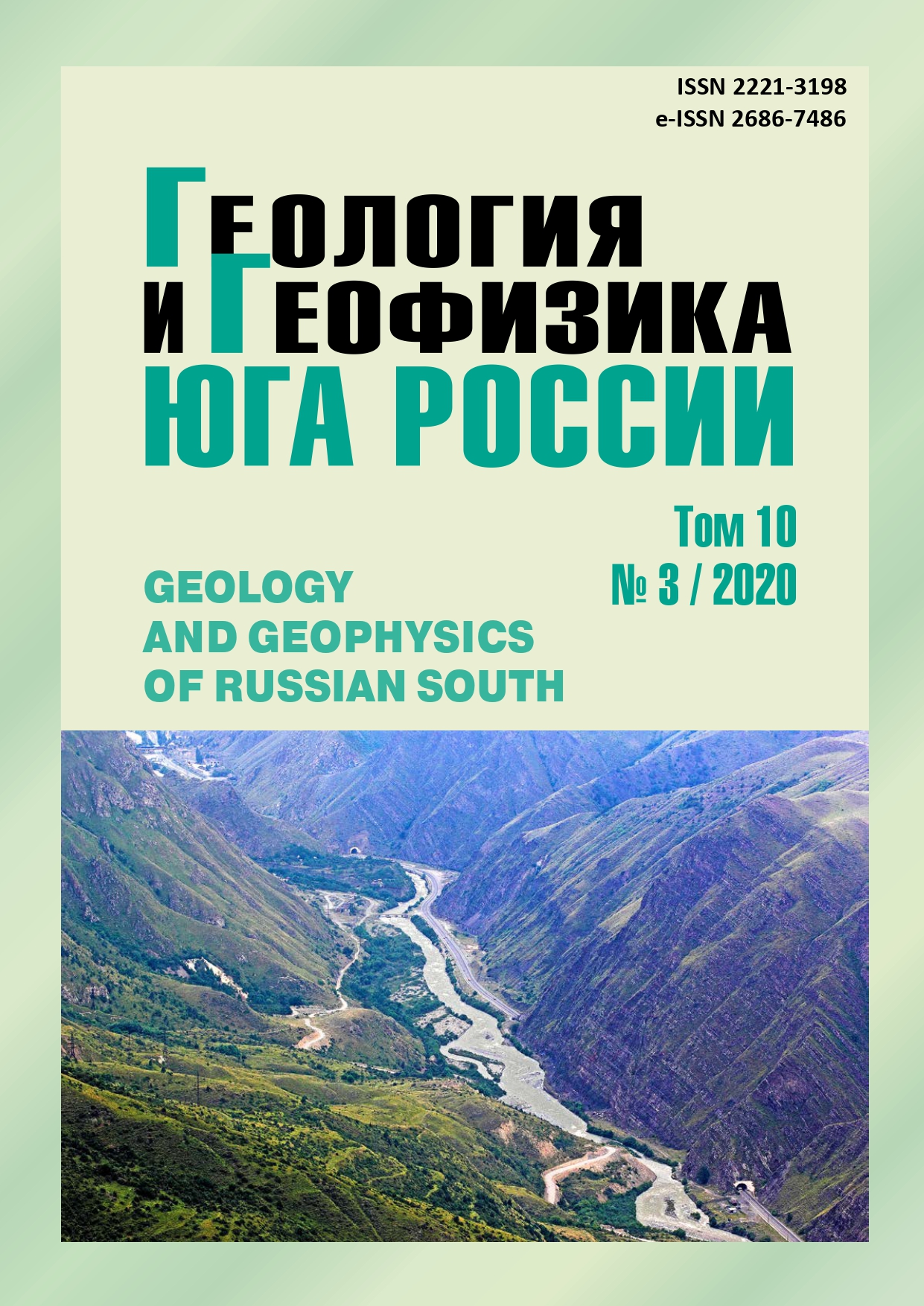Experimental study of mobilistic mechanisms of formation of the Alpine folded structure of the Greater Caucasus
Abstract
Relevance. In the article is discussed the mechanism of folding of the Greater Caucasus, which is still controversial. At present, the conditions for the formation of the main (pre-late orogenic) structure of the region, by most researchers in the result of analysis of the field data are considered as mobile underthrusting and thrusting mechanisms of folding. However, to resolve this issue, it is necessary to conduct experimental studies of the capabilities of these mechanisms to ensure their reliability. Aim. Experimental study of the underthrusting and thrusting mechanisms of the formation of a folded structure, to establish the similarity of the folding obtained by modeling and structure of the Greater Caucasus. The research methodology consisted in carrying out experimental modeling of fold genesis processes. Models imitating sedimentary strata of the Greater Caucasus consisted of packs of alternating horizontal layers of petrolatum, which were placed between two wooden blocks. When modeling the underthrusting mechanism of folding, the pressing bar had a wedge shape, which simulated gently sloping shear faults. In experiments with the thrusting mechanism of deformation, the active bars had steep edges, which produced the subvertical inclination of the edge fault. The original models were placed in a special device, where they were subjected to one-sided tangential deformation. Results. During modeling the underthrusting mechanism of folding in the process of oblique compression in the layered strata, overthrust (underthrust) displacements were observed along the gently-dipping surface of the shear fault of the almost undeformed layers. Behind them, under horizontal compression in the layered pack, subvertical highly compressed small scaled folding has developed. In the process of modeling the thrusting mechanism of folding genesis, bars with steep edges were pressed against the layered stack. During the deformation of the model parallel to the bedding, a zonal subvertical tightly compressed folding appeared near the pressing block. Its strength decreased towards the passive bar, where it passed into a monoclinal structure. In the course of modeling in underthrusting experiments, zonal folding was formed, the intensity of which increased with distance from the place of pressure. This folding morphology is not typical for the region, which contradicts the hypothesis of the underthrusting mechanism of its folding. In thrust experiments, an asymmetric zonal structure was also formed, but its tension decreased in the opposite direction. A similar zoning of the folded structure is developed within the Greater Caucasus, which confirms the possibility of its formation by the thrust mechanism of tectogenesis.


